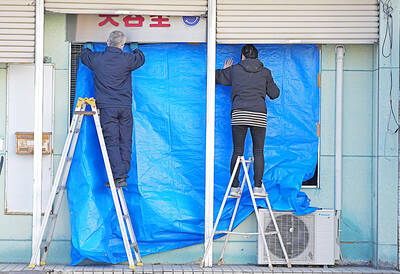The meeting between President Ma Ying-jeou (馬英九) and Chinese President Xi Jinping (習近平) in Singapore on Nov. 7 is set to impact upon the engagement between Taiwan’s next leader and Beijing, and redirect US attention to the importance of cross-strait development, according to a US academic.
New York University School of Law professor Jarome Cohen said the summit’s immediate impact would be on the presidential and legislative elections slated for Jan. 16.
“It will result in higher priority to cross-strait relations in the developing electoral dialogue and make voters give somewhat less attention to often-decisive domestic issues,” Cohen said, adding that he believes this might boost the floundering Chinese Nationalist Party (KMT) — which is trailing behind the Democratic Progressive Party (DPP) in the polls — to a “modest, but insufficient extent.”
However, he said that the more important impact on Taiwan goes beyond the elections.
Cohen said that the Ma-Xi meeting has had a favorable effect on cross-strait relations, “not by strengthening the impact of Ma’s already-conciliatory policies of the past seven years, but by helping to limit their expected erosion when he leaves the stage.”
“Because of growing Taiwanese nationalism, a crisis in cross-strait relations might re-emerge, no matter who wins the forthcoming elections,” he said. “In that context, the summit represents an important effort to minimize adverse development by offering a channel to continue high-level cross-strait relations.”
He said that by demonstrating equal dignity and status for Taiwan’s leader, China has given DPP presidential candidate Tsai Ing-wen (蔡英文) — the front-runner in the presidential race — an incentive to meet Xi halfway should she win the presidential election.
However, Cohen said that the price of Tsai’s admission is very likely to be too high for her to accept.
He said that the DPP has always rejected the so-called “1992 consensus” — which the Ma administration perceives as a tacit agreement between the two sides of the Taiwan Strait on “one China,” with each side free to interpret what that means.
He also said that after Tsai consolidates her hold on government, an attempt to organize another cross-strait leaders’ meeting should be made, without the acceptance of any preconditions.
The summit has also had an impact on US relations with both sides of the Taiwan Strait. It has revived, if only temporarily, US awareness of Taiwan and of the importance or cross-strait developments, Chen said.
The US government will undoubtedly want to push back at Xi’s attempt to exclude Washington from the Taiwan puzzle as part of Beijing’s efforts to reduce US influence in Asia, he added.

Taiwanese were praised for their composure after a video filmed by Taiwanese tourists capturing the moment a magnitude 7.5 earthquake struck Japan’s Aomori Prefecture went viral on social media. The video shows a hotel room shaking violently amid Monday’s quake, with objects falling to the ground. Two Taiwanese began filming with their mobile phones, while two others held the sides of a TV to prevent it from falling. When the shaking stopped, the pair calmly took down the TV and laid it flat on a tatami mat, the video shows. The video also captured the group talking about the safety of their companions bathing

US climber Alex Honnold is to attempt to scale Taipei 101 without a rope and harness in a live Netflix special on Jan. 24, the streaming platform announced on Wednesday. Accounting for the time difference, the two-hour broadcast of Honnold’s climb, called Skyscraper Live, is to air on Jan. 23 in the US, Netflix said in a statement. Honnold, 40, was the first person ever to free solo climb the 900m El Capitan rock formation in Yosemite National Park — a feat that was recorded and later made into the 2018 documentary film Free Solo. Netflix previewed Skyscraper Live in October, after videos

Starting on Jan. 1, YouBike riders must have insurance to use the service, and a six-month trial of NT$5 coupons under certain conditions would be implemented to balance bike shortages, a joint statement from transportation departments across Taipei, New Taipei City and Taoyuan announced yesterday. The rental bike system operator said that coupons would be offered to riders to rent bikes from full stations, for riders who take out an electric-assisted bike from a full station, and for riders who return a bike to an empty station. All riders with YouBike accounts are automatically eligible for the program, and each membership account

A classified Pentagon-produced, multiyear assessment — the Overmatch brief — highlighted unreported Chinese capabilities to destroy US military assets and identified US supply chain choke points, painting a disturbing picture of waning US military might, a New York Times editorial published on Monday said. US Secretary of Defense Pete Hegseth’s comments in November last year that “we lose every time” in Pentagon-conducted war games pitting the US against China further highlighted the uncertainty about the US’ capability to intervene in the event of a Chinese invasion of Taiwan. “It shows the Pentagon’s overreliance on expensive, vulnerable weapons as adversaries field cheap, technologically